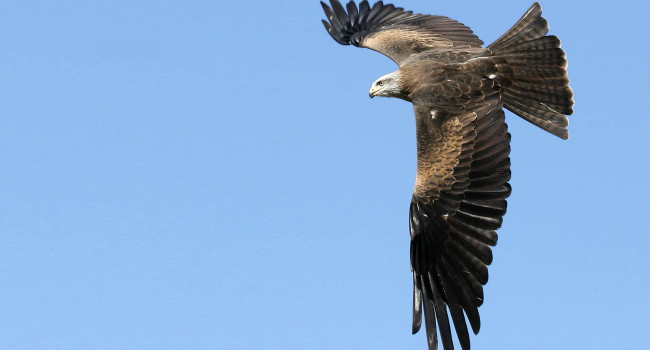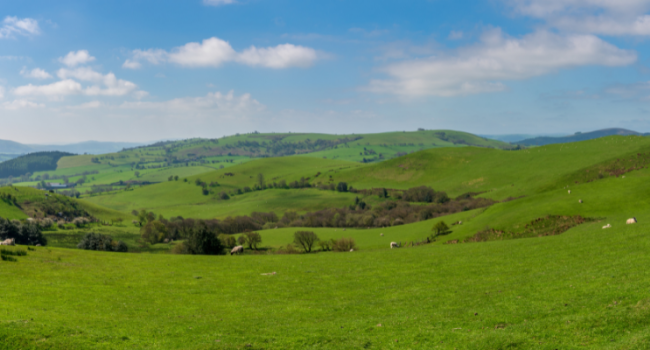If you go down to the woods tonight…
16 Jul 2024 | No. 2024-22
One of the UK’s weirdest, and least understood, birds is facing increasing challenges as a result of wetter springs and ongoing insect declines.
Researchers from the British Trust for Ornithology (BTO) have been tagging rare nocturnal Nightjars, in the hope of better understanding the secret life of these peculiar visitors.
As dusk falls, an eerie sound drifts across the heath. A strange, almost mechanical, insistent purr. This is the sound of a male Nightjar, a bird that most people have never even heard of, let alone heard or seen for themselves.
Historically, these nocturnal birds were treated with suspicion, and earned such curious names in folklore as ‘fern-owl’ and ‘goatsucker.’
Nightjars are summer visitors to the UK, flying here from their wintering grounds 6,500 km away in sub-tropical Africa. They nest on heaths, moorlands, and forest clearings, where they spend the day tucked away, perfectly camouflaged, on the ground. At night, they emerge, singing their evocative ‘churring’ song, wing-clapping and searching for food, primarily moths and flying beetles.
But the Nightjar’s story has not always been a happy one here in the UK. For many decades, they had been in steep decline and in a twenty-year period from 1972 to 1992 their numbers and breeding distribution halved, as their preferred habitat was destroyed to make way for developments and agriculture. Now, after years of active conservation, Nightjars are returning and re-establishing themselves in suitable habitat across England, Wales, and Scotland, though they remain absent from Northern Ireland. However, around half of the former breeding range still remains unoccupied.
While we may be celebrating a modest success for our nesting Nightjars, they still face multiple challenges. For example, the very wet and stormy weather we experienced across much of Europe in spring both this year and in 2023, hampered the Nightjars’ migration and delayed their arrival. Data gathered from BTO’s BirdTrack app, clearly show a reduction in Nightjars reported on UK breeding grounds, following severe weather events on the Continent during this year’s migration period.
Even those that made it have found fewer large insects, resulting in less food for themselves and their chicks. And the continued wetter, cooler summer so far this year is likely to have impacted negatively on their breeding success once again.
There is still much to learn about their lives outside of the UK, and little is known about the challenges that they may face on migration and in their tropical wintering grounds.
In recent summers, BTO scientists have been donning headtorches, applying midge repellent, and heading out into the night to locate, catch and fit GPS tags to Nightjars to better understand the habitat requirements, and movements, of these cryptic birds.
Initial discoveries have revealed that the birds, once they leave the UK, take around six to eight weeks to cross Europe, the Mediterranean and the Sahara Desert, before passing the equatorial rainforests and arriving in the scrubby grasslands of the Democratic Republic of Congo. This contradicted what ornithologists had longed presumed, thinking that Nightjars only wintered in East and West Africa.
Understanding the routes and ultimate destinations of migratory birds can help inform conservationists of the challenges the birds face away from the breeding grounds. By having more information about the birds’ movements and needs en route, we can hope to implement measures that may help these long-distance travellers in the long term.
While the Nightjar breeding population in the UK still has a long way to go to match is pre-decline levels, there is optimism. A better understanding of their requirements while they are here allows conservationists to provide more suitable habitat. By collaborating with landowners and commercial forestry enterprises, ornithologists can help ensure a mix of ideal nesting and feeding areas for the Nightjars.
Greg Conway, Senior Ecologist with BTO, says: “When we last conducted a thorough nationwide Nightjar survey in 2004, we saw a notable increase of 36% in breeding numbers in the UK in just a decade. That upward trend is expected to have continued, with warmer breeding season temperatures helping Nightjars move further north as well as re-occupying areas where they had been lost. However, there are concerns that the accompanying changes in weather could impact on migration patterns and breeding success. A new national survey is now required to find out how well the species if faring. With a better understanding of these remarkable birds’ needs we can hope to make the mysterious song of the Nightjar a more familiar sound in the coming years.”
For further information about the Nightjar tracking project please visit: www.bto.org/nightjars






Share this page